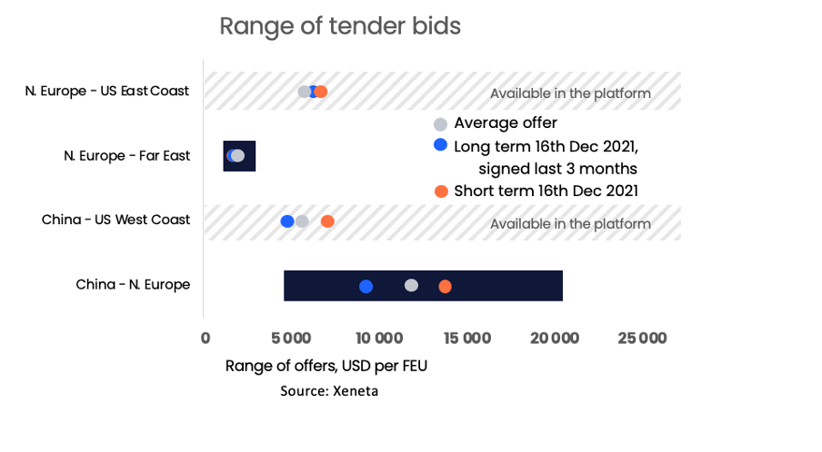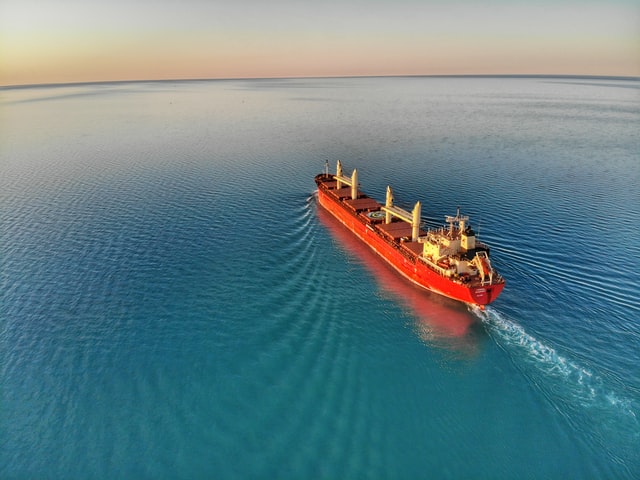As the first round of tender data has started to roll in, Xeneta data indicates that most of the 2022 contracts will be at record-high levels. As carriers reap the benefit of a great year so far; shippers are still looking to bring predictability and stability to their supply chain.
So what prices are coming in?
Xeneta data for four trades show bids landing in three main price brackets:
- The lowest bids are being offered by some carriers but require shippers to agree to either extended contract periods or wider logistics agreements
- The middle range is the more traditional carrier offers
- The highest prices are from freight forwarders, though they are also offering some shippers competitive rates compared to the traditional carrier offerings.
“For shippers, the question has to be are there any real alternatives to agreeing to these record-high rates? Or are they at the mercy of carriers who are enjoying their current position of power?” suggests Peter Sand, Chief Analyst at Xeneta.
“However, given these much higher prices, shippers deserve much better service. This includes containers arriving within a reasonable time, at the desired port and at the agreed price.”
On China to North Europe trade the average of the bids that have come in is USD 11 900 per FEU, a considerable increase for all shippers compared to long-term contracts signed in 2021. There is, however, a large range in offers depending on who is making the offer and what the conditions are. No one solution will fit all shippers.
The China to US trade is in a much earlier tender process stage with the market not yet settled. However, early indications show average bids of USD 5 700 per FEU.
These same three price brackets can be seen on trades out of Europe to both the Far East and the US East Coast, though the range of prices is much narrower. Bids are on average coming in at USD 1 900 and USD 5 700 respectively.

“Though the absolute level of the long-term rates coming in may leave you gobsmacked, the fact that they follow the spot market should come as no surprise as the long- and short-term markets are correlated. While it may be tempting to go for the lowest price offered, differences in what is being offered mean the implications on the wider supply chain should be considered – with no one-size-fits-all solution,” recommends Peter.
The importance of stability and predictability in global supply chains has been highlighted in the past year. Securing these will be the biggest priority for many shippers as they enter tough negotiations.
However, it might be risky for shippers to enter into a long-term rate agreement without being fully informed and having data available to make those conclusions. Xeneta helps shippers and suppliers with unbiased market insights to support data-driven decisions as a neutral source.
With over 280 million contracted container and air freight rates covering over 160,000 global trade routes, Xeneta’s powerful reporting and analytics platform provides liner-shipping stakeholders the data they need to understand current and historical market behavior.



